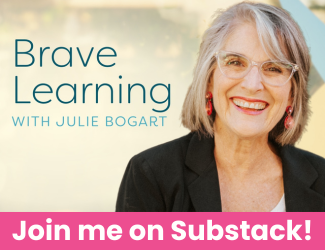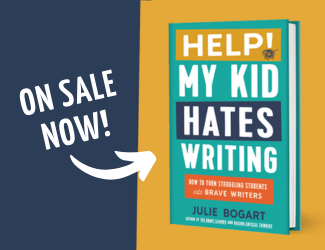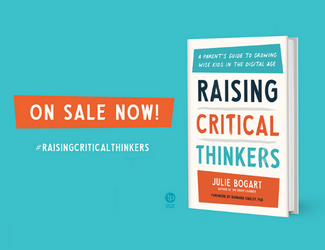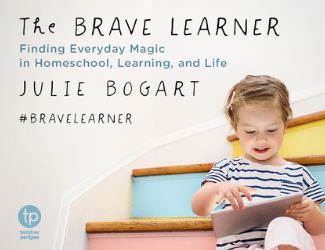Boredom Is a Red Flag
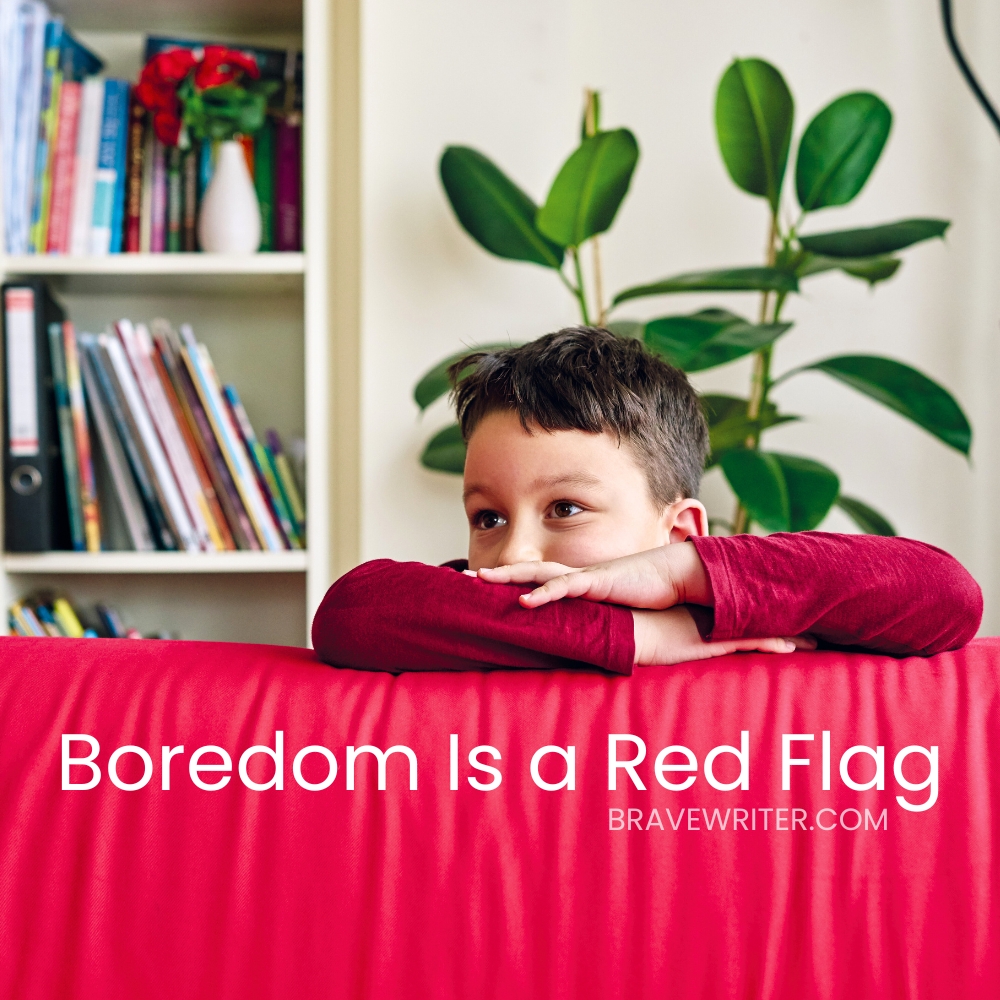
“I’m bored.”
Words no parent wants to hear.
My dad, unhelpfully, used to reply to us that we had no idea how valuable our free time would appear to us as adults, and that we shouldn’t waste it since we’d never get it back.
Like I said: Unhelpful.
In that moment, I was genuinely bored, as a kid with free time. I didn’t know what to do with myself. My declaration was a cry for help (ideas, materials, suggestions, participation). It wasn’t a philosophical musing in need of expansion.
Boredom is a signal!
It’s a sign that something needs to change about the environment or your interactions with your kids. It is not an indictment on a child’s ability to self-soothe or auto-entertain.
Some parenting “experts” suggest leaving your child in a bored condition, as though once bored long enough, stores of creativity will rush forward. The advice goes something like this: “It’s okay for your children to be bored. If they are bored long enough, eventually they will become creative geniuses because they had nothing better to do.”
Only that isn’t what happens. If you leave a child bored long enough, they typically whine louder, get into mischief, or pick a fight! Boredom doesn’t ensure creativity, problem solving, or learning. Deliberately fostering an environment that produces boredom is cruel.
The experts aren’t entirely out of line in their hope that a child without something to do will find something he or she wants to do, and it will be fresh and new. But boredom doesn’t take anyone there.
There’s a difference between “boredom” (a feeling of futility) and “pause” (the let-down after a rush of activity). Sometimes a child is simply recalibrating after a vacation or visit from his best friend or post-birthday party. A soothing “downtime” activity like watching a DVD or taking a bath or going for a walk with the dog may be just the transition needed.
The way to address the “I’m bored” comment that comes from “nothing to do” is not to shame it or blame it. Rather, you want to create “space” for newness, for freshness. It’s okay not to plan all the activities for the day. It’s okay to let children explore their environment in search of something new to do. What isn’t okay is leaving them to search in a tedious, empty-of-possibilities environment. That’s what produces boredom and “I can’t think of anything to do.”
Your job is to keep a home that is flexible enough, well enough stocked, surprising enough (on many occasions, not just once-in-a-blue-moon), and accessible enough to your kids. It should be a home where kid activity is welcomed. It should be a home where messes are freely made.
Like this:
Put an arts and crafts table in the middle of the main room in the house (not the basement, not in a corner of a room no one is in, not in the child’s bedroom). The arts and crafts table ought to be where the family hangs out. It should hold materials like paintbrushes in tin cans, watercolors, finger paints, paper for painting. It should have scissors, sponges, polymer clay, scotch tape, pipe cleaners, markers, pencils, and stencils all in little bins or on trays. Hang out-of-use men’s dress shirts on a nearby hook to wear over clothes to protect your kids from staining their shirts and shorts. The table can be covered in contact paper for ease of wiping messes after they are made. Containers for water to dip brushes ought to be available too. A trash can can be tucked under the table for scraps of cut up paper or used up materials. Art books with real art in them make great models for inspiration, too.
In our family, I mounted a bulletin board right above the arts and crafts table so paintings and drawings could be hung right away. We also strung a clothing line across the room and used clothespins to hang masterpieces.
Clear the coffee table. At bedtime, put out the “new” item you want your kids to find in the morning on the now cleared surface. It might be a new set of jacks, pick up sticks, or a book that teaches knitting with needles and yarn waiting. Perhaps you leave a snorkel and goggles on the table and when the kids wake, you let them know you are off to the beach or swimming pool. Put out a new board game (Sorry, Risk, Stratego, Spinergy, Clue, Life). A stack of beautiful note cards and pens (maybe even calligraphy or fountain pens!) with a list of addresses, stamps, and sealing wax for the envelopes could cause even reluctant writers to send letters to grandparents, aunts, and cousins. Bouncy balls will create a chaos of fun, as will a bigger ball for handball against the garage door. Teach them how to play. Sidewalk chalk for hopscotch—so much fun! Make your own markers out of polymer clay. Buy a book of origami and a stack of the beautiful squares of paper. Make paper cranes!
Invest in technology. Buy the game or camcorder or iPad. It’s the future. It’s worth turning your kids loose to discover how these work. They will show you things to do on your device you didn’t even know were possible. Know that they will break them all eventually. Be prepared for that outcome. Do not “loan” your precious tool to your kids. Get them their own.
Make the kitchen kid friendly. Bored kids often become engaged when they are making real stuff. Food is about as real as it gets. Let them make the lunch or afternoon snack. If you are ambitious, they can do dessert or the entire dinner. Find recipes that are kid friendly (English muffin pizzas, ice cream sundae bar, omelets, hamburgers, shish kabobs, stir fry, cupcakes, wraps, Mexican food, chili). Someone can lay the table with place cards and a centerpiece.
Dress up clothes and face paints: these two together provided untold distractions for my children. What I discovered, though, was that they liked it better if an adult did the face painting because the results were clean and satisfying. They also liked involving me (and a friend who was a lot better at face painting than I was!). We also would say: “Give us a show at ________ o’clock.” That kind of time frame helped the kids to not just play but to know there was a check-in time with the parents too (the kids weren’t being “sent away” because they were annoying, but to produce something to share).
Be the buddy. Play the card game, jump the rope, watch the movie (for the jillionth time), bake the muffins, paint, model, dress up. You deserve to play too. Your kids deserve to have your involvement. The goal isn’t to get them to stop being bored so you can have a break. The idea is to create conditions that lead to self-started entertainment. Sometimes that happens best when you’re a participant.
Lastly, boredom is a fact of life. Kids are notoriously short on patience for the “next thing.” They want to be doing it right now! Suggesting that they clean their rooms is not useful.
Make a big list (with the help of your kids) of all the activities possible in your home that children and teens can do alone. Post the list to the refrigerator and send your children to it to consult when they forget what they can do. Put supplies in obvious places so that they get inspired. Kids don’t find activities in their heads. They find them among the items they encounter in the house. Don’t hide all that good stuff behind cabinet doors!
Make sure there is nothing on the refrigerator list that still needs to be purchased! Nothing worse than getting that perfect idea of what to do only to find out that you are out of paints or batteries.












